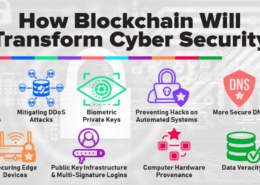Artificial intelligence has been a turning point in the field of science. Will this technology replace humans in their jobs? Also, discuss the disadvantages of AI and how humans can safeguard their jobs in the age of artificial intelligence.
Advancements in AI Capabilities Natural Language Processing (NLP): NLP will continue to improve, leading to more sophisticated conversational agents and translation services. AI will become better at understanding context, tone, and nuance in human communication. AI in Creativity: AI will play a larRead more
Advancements in AI Capabilities
- Natural Language Processing (NLP): NLP will continue to improve, leading to more sophisticated conversational agents and translation services. AI will become better at understanding context, tone, and nuance in human communication.
- AI in Creativity: AI will play a larger role in creative industries, generating art, music, literature, and even complex scientific theories. This could lead to new forms of collaboration between humans and machines.
- Autonomous Systems: AI-powered autonomous systems, such as self-driving cars and drones, will become more reliable and widespread, transforming transportation, logistics, and even urban planning.
. AI and Healthcare
- Precision Medicine: AI will revolutionize healthcare by enabling more accurate diagnostics, personalized treatment plans, and predictive analytics for disease prevention. AI-driven drug discovery and robotic surgery will become more common.
- Mental Health: AI tools for mental health, such as chatbots and therapy apps, will become more sophisticated, providing accessible support for individuals and helping to reduce the stigma around mental health issues.
. Ethical and Regulatory Challenges
- AI Ethics: As AI systems become more powerful, ethical concerns will intensify, particularly around bias, fairness, and transparency. Ensuring that AI operates within ethical guidelines and respects human rights will be a significant challenge.
- Regulation: Governments and international bodies will likely introduce more stringent regulations to govern AI development and deployment. This could include frameworks for data privacy, accountability, and the ethical use of AI in areas like surveillance and law enforcement.
. Workforce and Economic Impact
- Job Displacement: AI and automation could lead to significant job displacement in industries like manufacturing, retail, and administrative services. However, it will also create new opportunities in AI development, data science, and emerging fields.
- Reskilling and Education: The demand for AI literacy and skills will drive changes in education and training programs, emphasizing the need for lifelong learning and adaptability in the workforce.
. Emerging Technologies and Trends
- Quantum Computing: The development of quantum computing could exponentially increase AI’s processing power, enabling breakthroughs in areas like cryptography, material science, and complex simulations.
- AI and IoT (Internet of Things): The convergence of AI with IoT will lead to smarter cities, more efficient supply chains, and enhanced environmental monitoring. This will require robust cybersecurity measures to protect interconnected systems.
- Edge AI: AI processing will increasingly occur on devices (edge computing) rather than relying on centralized cloud servers. This will reduce latency, improve privacy, and enable real-time decision-making in applications like autonomous vehicles and smart cities.
Concerns
- AI Weaponization: The development of AI for military purposes, including autonomous weapons, raises significant ethical and security concerns. International cooperation will be crucial to prevent the misuse of AI in conflicts.
- Surveillance and Privacy: AI-driven surveillance technologies could lead to more pervasive monitoring of individuals and erosion of privacy rights, particularly in authoritarian regimes.
- Deepfakes and Misinformation: The rise of AI-generated deepfakes and sophisticated misinformation campaigns could undermine trust in media and public institutions, posing risks to democracy and social cohesion.


AI integration with AR, VR, and IoT creates powerful immersive learning experiences by combining intelligent adaptation with sensory-rich environments. AI algorithms analyze learner data to personalize content and pacing, while AR/VR provides realistic, interactive 3D simulations. This allows for haRead more
AI integration with AR, VR, and IoT creates powerful immersive learning experiences by combining intelligent adaptation with sensory-rich environments. AI algorithms analyze learner data to personalize content and pacing, while AR/VR provides realistic, interactive 3D simulations. This allows for hands-on practice in safe, controlled settings.
IoT devices collect real-time data on learner performance and environmental factors, feeding this information to AI systems for continuous optimization. AI can adjust difficulty, provide targeted feedback, or introduce new challenges based on the learner’s progress and physiological responses.
In AR applications, AI enhances object recognition and spatial mapping, overlaying context-sensitive information and interactive elements onto the real world. In VR, AI drives realistic NPC behaviors and dynamic scenario generation, creating more engaging and responsive virtual environments.
These technologies synergize to create adaptive, multi-sensory learning experiences that cater to individual needs and learning styles. Learners can interact with complex concepts in tangible ways, practice skills in lifelike scenarios, and receive personalized guidance – all within a seamless, AI-orchestrated environment that evolves with their progress.
See less